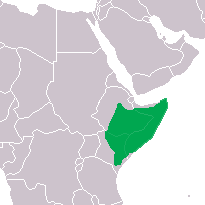 The mole rat is a fascinating family of species (closely related) as some like the naked mole rat live closer to the life social life of an ant rather than any other mammal. This is also known as the sand puppy, and is a burrowing rodent native to the Horn of Africa and parts of Kenya, notably in Somali regions. It is closely related to the blesmols and is the only species in the genus Heterocephalus.
The mole rat is a fascinating family of species (closely related) as some like the naked mole rat live closer to the life social life of an ant rather than any other mammal. This is also known as the sand puppy, and is a burrowing rodent native to the Horn of Africa and parts of Kenya, notably in Somali regions. It is closely related to the blesmols and is the only species in the genus Heterocephalus.
The naked mole-rat exhibits a highly unusual set of physiological and behavioural traits allowing it to thrive in a harsh underground environment; most notably its being the only mammalian thermoconformer (species which allows its body temperature to fluctuate with the environment) and almost entirely ectothermic (cold-blooded) form of body temperature regulation, as well as exhibiting a complex social structure split between reproductive and non-reproductive castes, making it and the closely related Damaraland mole-rat the only widely recognized examples of eusociality (the highest classification of sociality) in mammals. The naked mole-rat lacks pain sensitivity in its skin, and has very low metabolic and respiratory rates. It is also remarkable for its longevity and its resistance to cancer and oxygen deprivation.
While formerly considered to belong to the same family as other African mole-rats, Bathyergidae, more recent investigation places it in a separate family, Heterocephalidae. Despite this, should I cover other mole-rat species, they will be covered on this page. Living underground almost all the time, they are pretty useless in terms of tourism.
The naked mole-rat is well adapted to the limited availability of oxygen within the tunnels of its typical habitat. It has underdeveloped lungs and its hemoglobin has a high affinity for oxygen, increasing the efficiency of oxygen uptake. It has a very low respiration and metabolic rate for an animal of its size, about 70% that of a mouse, thus using oxygen minimally. In response to long periods of hunger, its metabolic rate can be reduced by up to 25 percent. The naked mole-rat survives for at least 5 hours in air that contains only 5% oxygen; it does not show any significant signs of distress and continues normal activity. It can live in an atmosphere of 80% carbon dioxide and 20% oxygen. In zero-oxygen atmosphere, it can survive 18 minutes apparently without suffering any harm (never-the-less, none survived for 30 minues). During the anoxic period it loses consciousness, its heart rate drops from about 200 to 50 beats per minute, and breathing stops apart from sporadic breathing attempts. When deprived of oxygen, the animal uses fructose in its anaerobic glycolysis, producing lactic acid. This pathway is not inhibited by acidosis as happens with glycolysis of glucose. As of 2017, it was not known how the naked mole-rat survives acidosis without tissue damage.
Mole rats in general comes from a total of 4 families containing over 50 species. As this website grows, I hope to have pages for all these individual species, but for the time-being, it is beyond the capability of this website to make a page on all species at the current time. I hope to set things up, so readers can easily help.
Below, you will find a list of any articles which mention this species. Below that, is a short video on the naked mole rat. Beneath this, as always, we will add opportunities to see this animals in the wild.










